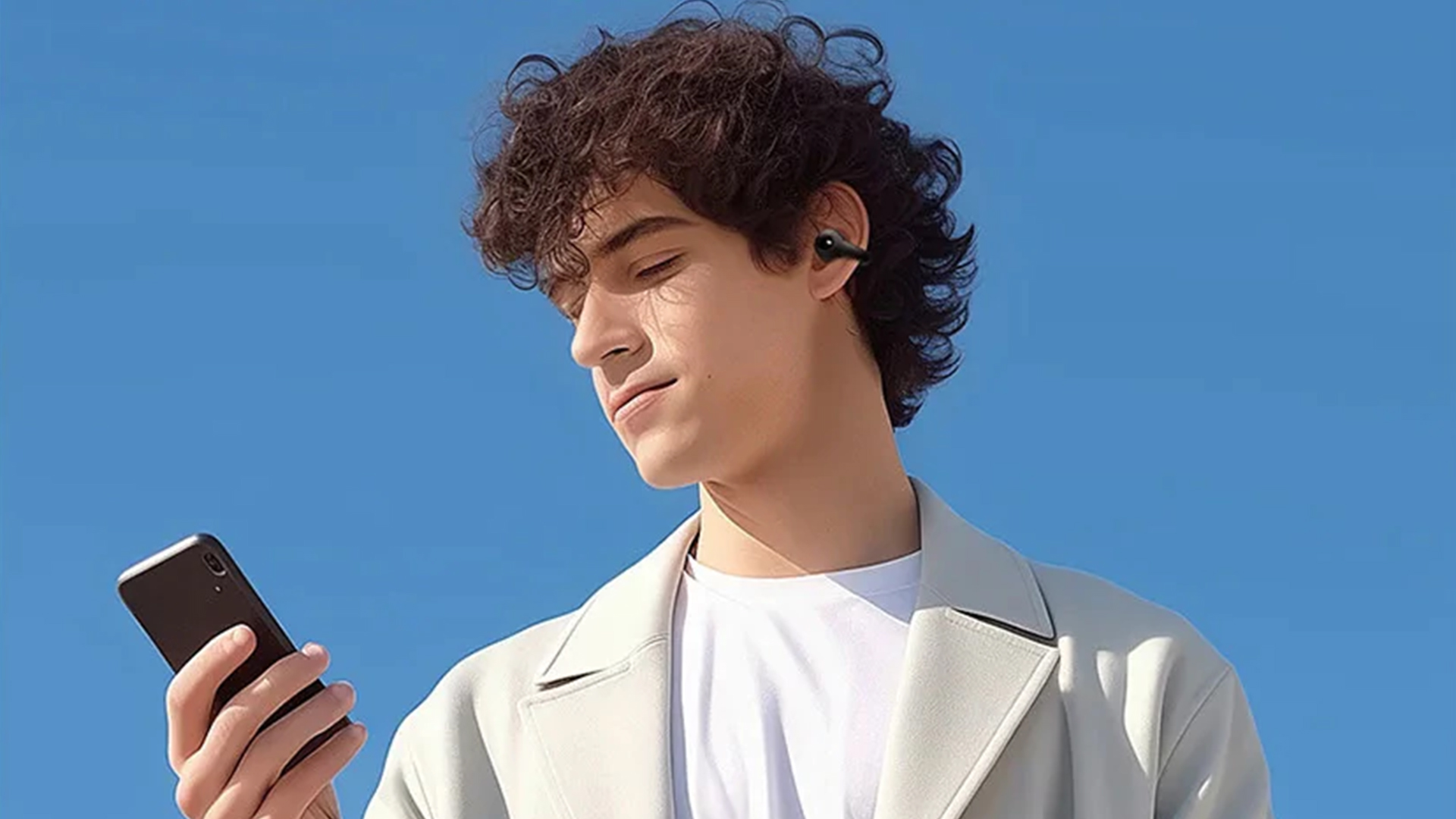These open-ear earbuds are the wildest looking headphones I’ve seen in some time, and I’m hooked
A cheap rival to the Huawei Free Clip or Bose Ultra Open Earbuds has entered the chat

Tech company Baseus has launched the AirGo AS01, a pair of open-ear earbuds that put an interesting spin on the design of traditional style we're used in the best earbuds.The AirGo AS01 headphones aren’t inserted into your ear canal for stability like most true wireless earbuds on the market. But they don’t fit around your ear with a hook or head with a band like other alternative designs that you'll find in the best bone conduction headphones either.
Instead, they have a unique mechanism that ‘clamps’ them onto the side of your ear, meaning they then stay in place with tension as they’re only light at 4.6g per bud. Although Baseus’ approach isn’t common, this clamping mechanism has been found in other models like the Huawei Free Clip and Bose Ultra Open Earbuds but much more affordable – whether that’s a good thing or not remains to be seen.

As well as an innovative design, Baseus says that these earphones offer 25 hours of battery life from the charging case and six hours from the buds, which is good in comparison to many of the best workout headphones. The Baseus earbuds use air conduction technology to direct sound at your ears to bring you quality audio but reduce leakage. There are also two mics in each bud, which work in tandem with a call noise reduction algorithm to ensure call quality is clear.
In theory, these features packed into this design would bring you good sound with comfort and stability without the need to insert anything into your ear canal. This would also mean better awareness of what’s going on around you, making them ideal for working out outside. But are the Baseus AirGo AS01 headphones too good to be true? Possibly.
Will the Baseus AirGo AS01 earbuds actually sound good?
It’s impossible to comment on what these earbuds would actually be like to wear without having tested them ourselves. Especially considering they’re incredibly cheap at $15.79 / £12.73 and only available to buy on Alibaba’s AliExpress, a global online marketplace filled with a huge range of tech products of varying quality.
As excited as we are about new approaches and innovative devices, we can’t help but feel a little wary about whether this design is actually going to fit a range of ears, remain stable and then deliver good sound.
Still, it’s interesting to see a different take on the open-ear designs we’ve seen over the past year, like the Shokz OpenFit, which have a bendy ear hook to place a speaker directly over your ear canal. Or the older Sony Linkbuds that fit in your ear but keep the ear canal free. They're very similar to the Huawei Free Clip, but we haven't had chance to test them and clamp them onto our ears yet either.
Sign up for breaking news, reviews, opinion, top tech deals, and more.
It’s clear that open-ear headphones – whether with bone-conduction or air conduction technology – are having a moment. And it’s easy to understand why. Some people want the cocoon of sound they can only get from a pair of the best noise-cancelling headphones. But others either don’t like that eerie level of noise cancelling or can’t listen to music that way because they need to stay present as they workout or work.
Open-ear headphones are the solution, but they also come with their own set of challenges. Namely, how do they stay put on a range of ears when they’re not anchored by either an over-ear or in-ear design?
Tech companies have been working on solving this problem, like with the bendy ear hooks on the Shokz OpenFit or the headband design of the best bone conduction headphones. But even then they’re not always suitable for everyone. Because our ears, heads and preferences are different, after all.
You might also like

Becca is a contributor to TechRadar, a freelance journalist and author. She’s been writing about consumer tech and popular science for more than ten years, covering all kinds of topics, including why robots have eyes and whether we’ll experience the overview effect one day. She’s particularly interested in VR/AR, wearables, digital health, space tech and chatting to experts and academics about the future. She’s contributed to TechRadar, T3, Wired, New Scientist, The Guardian, Inverse and many more. Her first book, Screen Time, came out in January 2021 with Bonnier Books. She loves science-fiction, brutalist architecture, and spending too much time floating through space in virtual reality.